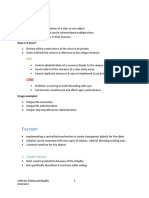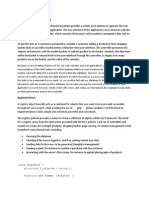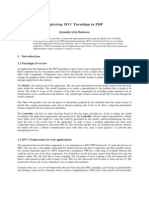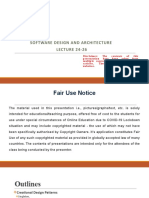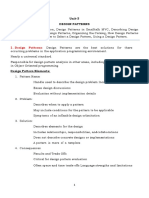0% found this document useful (0 votes)
10 views2 pagesPHPDesign Patterns Cheat Sheet
The document provides a cheat sheet on various PHP design patterns including Singleton, MVC, Adapter, Dependency Injection, Active Record, Simple Factory, Facade, Observer, Decorator, and Strategy. Each pattern is described with its usage, key components, and drawbacks. The focus is on simplifying operations, improving modularity, and managing dependencies in software development.
Uploaded by
Ulug'bek MamatqulovCopyright
© © All Rights Reserved
We take content rights seriously. If you suspect this is your content, claim it here.
Available Formats
Download as PDF, TXT or read online on Scribd
0% found this document useful (0 votes)
10 views2 pagesPHPDesign Patterns Cheat Sheet
The document provides a cheat sheet on various PHP design patterns including Singleton, MVC, Adapter, Dependency Injection, Active Record, Simple Factory, Facade, Observer, Decorator, and Strategy. Each pattern is described with its usage, key components, and drawbacks. The focus is on simplifying operations, improving modularity, and managing dependencies in software development.
Uploaded by
Ulug'bek MamatqulovCopyright
© © All Rights Reserved
We take content rights seriously. If you suspect this is your content, claim it here.
Available Formats
Download as PDF, TXT or read online on Scribd
/ 2

